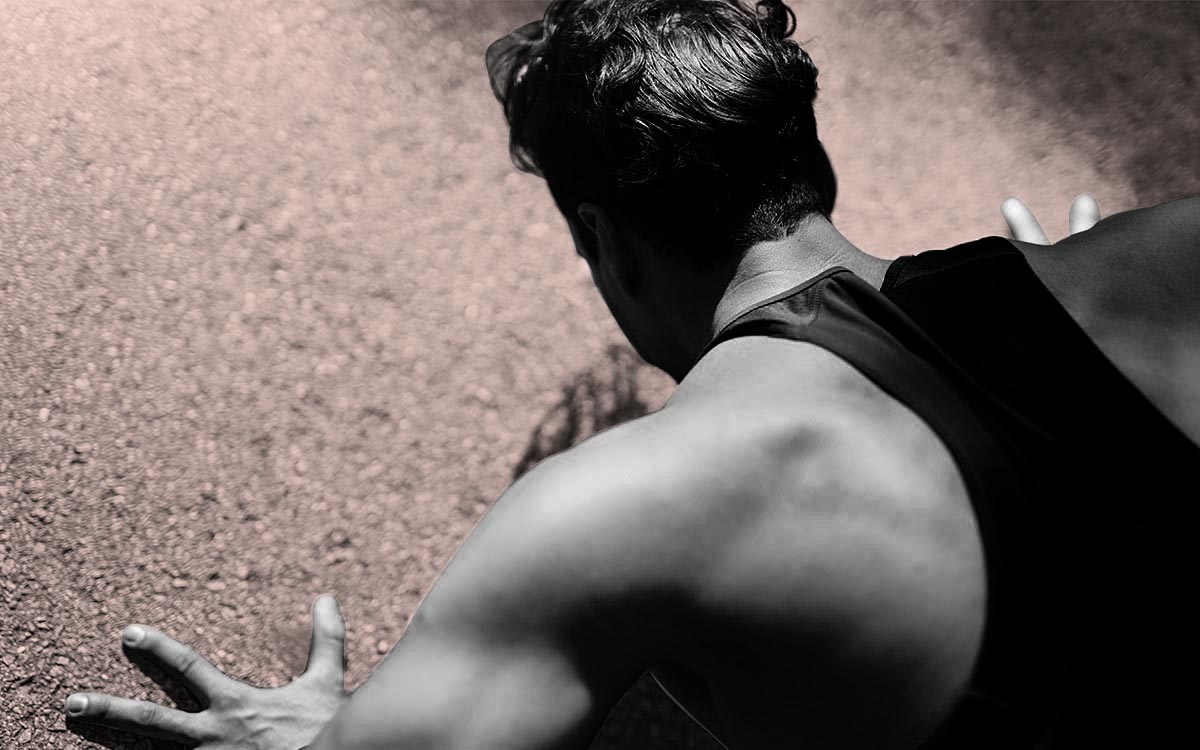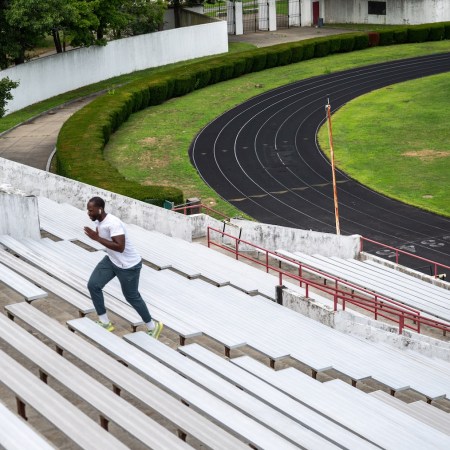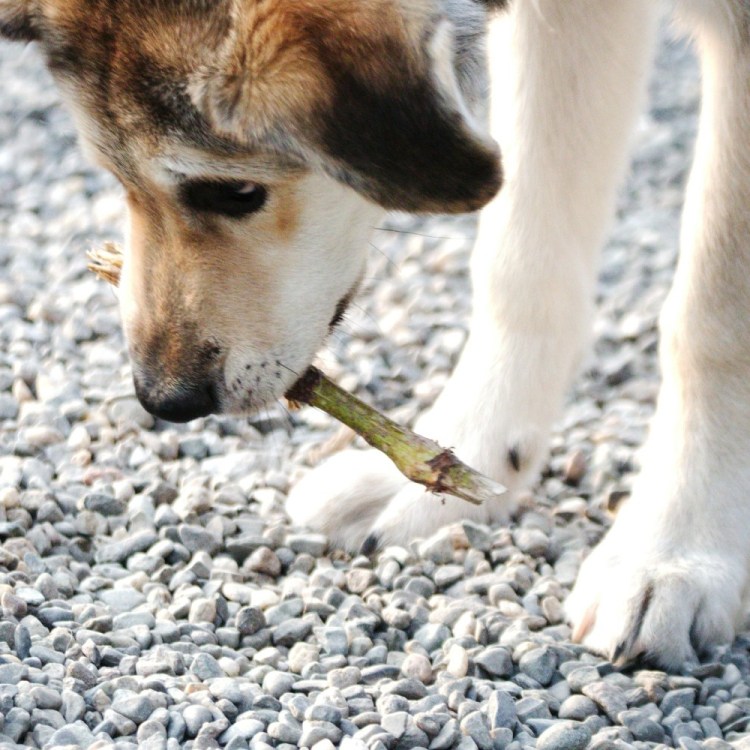Welcome to The Workout From Home Diaries. Throughout our national self-isolation period, we’ll be sharing single-exercise deep dives, offbeat belly-busters and general get-off-the-couch inspiration that doesn’t require a visit to your (likely now-shuttered) local gym.
A couple weeks ago, I talked to Harvard geneticist Dr. David Sinclair about how to live past 100. He’s devoted decades to researching the topic, and naturally he has quite a few thoughts on everyday practices that encourage longevity, from exposure to cold temperatures to variances on calorie restriction. In the exercise realm, specifically, he favors workouts that induce a hypoxic response. That can be loosely defined as any routine that leaves you heaving for oxygen.
It is surprisingly easy to complete a workout and not come anywhere close to the state. I’m a steady, everyday gym-goer, but when pressed for time, or struggling for motivation, I’m more than capable of sleepwalking through presses, rows and swings without breaking much of a sweat. That’s why I, and millions of others, supplement personal sessions with high-intensity classes that are geared towards upping VO2 max, and spurred by trainers who won’t take “But I’d rather not” for an answer. I wasn’t surprised to hear Dr. Sinclair anoint HIIT training as the workout to stick to if you want to live longer. It destroys the body, so of course it makes it better.
As none of us will be heading to a high-intensity class for a while, you should feel free to pilfer precise moves from that style of workout. One of my favorite writing teachers at school often used the phrase “stealable items.” An inspired fitness routine should remember and borrow from other inspired fitness routines, just like any inspired piece of writing should borrow from other inspired pieces of writing. Short of finding your trainer online, or diving into YouTube to exactly replicate an all-out anaerobic routine, this is as good time to hone in on a single exercise, master it, and let it evolve. If it requires little to no equipment and works the whole body, all the better.
Mountain climbers, the less-cool cousin of burpees, tick all the above boxes. While regular bootcamp-goers have probably experienced a bit of an adult renaissance with respect to the move, it’s completely understandable if you left them behind in fourth grade. Elementary school gym teachers — some of the nation’s most diabolical public servants — seem to love them, but few pre-adolescents, clad as they are in standard issue mesh gym shorts, would name them as their exercise of choice. They’re also a bit difficult to perform properly at a young age. But that’s precisely why they’re worth revisiting.
It’s helpful to think of mountain climbers as “running planks,” as they combine one of the healthiest activities a human being can do, period, with the most important isometric core exercise in the game. Forget needing a whole HIIT class. Blend those two moves correctly, throw together a rudimentary circuit, and you’ve got a reliable, whenever-wherever workout option for the months ahead.
I prefer performing mountain climbers on a non-slip yoga mat, but a patch of carpet works fine. And if your town/neighborhood’s public spaces are still open and the sun’s in the sky, a stretch of track or grass could be a nice way to get out of the house. Once you’re all set up (if inside, go barefoot; if outside, wear a pair of grippy, well-fitting sneaks), assume a plank position. Distribute your weight equally between your hands and toes, keep your hands shoulder-width apart, and keep your back flat. Remember the tricks for pulling off an efficient plank; flex the core and the glutes. If your back and neck are doing the work, you’re not doing it right. (And you’re low-key going to injure yourself.)
Now simulate a running motion against the ground. When I was a kid, and 65 of us were dripping snot all over a basketball court floor, we’d make a point of bringing our knees up and slamming one foot against the ground. Then we’d switch to the other. You know. Mountain climbers. That’s not the aim here. While you should touch the ground, it should be a tap, and part of a fluid back-and-forth motion, which establishes a precise, efficient flow. Some other things to look out for: make sure your hips don’t shimmy side to side, keep your back from camel-ing up (when your shirt starts to ride, that’s a tell-tale sign), and don’t bounce. We all want to bounce when exercising, but it gets in the way of proper form and time under tension.
It’s your call how you take your mountain climbers. I’d say focus on doing them correctly before making modifications. If your’e struggling, engage a step or ledge with your upper body (which gives your feet a target to reach for), and if this whole thing is a breeze, perform them while clutching a medicine ball. No matter how you approach it, you’re going to get a microwaveable dinner of a workout that torches your triceps, deltoids, abs, back, hip flexors, quads, hamstrings and butt. That hypoxic response Dr. Sinclair wants you to focus on? Very much attainable. Try a simple circuit to start. Five sets of 90 reps. Mix in a simple and mindless exercise in between, like a lap or 50 jumping jacks, to make sure you’re really focusing on doing the mountain climbers correctly. Then go have a beer. You’ve earned it.
The Charge will help you move better, think clearer and stay in the game longer. Subscribe to our wellness newsletter today.

















